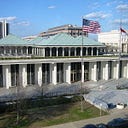NCAE Supports 3% Raises from Wake County Dems, Opposes 4% Raises from Legislative Republicans
Hypocrisy benefits the richest school districts while poor districts get nothing
Raleigh, N.C. — Last week the Wake County chapter of the North Carolina Association of Educators praised Wake County Democrats for providing 3% pay raises to school employees and 0.5% raises to teachers in Wake County.
But the NCAE and Governor Roy Cooper oppose the higher pay raises for teachers and other school employees that Republicans passed. Governor Cooper vetoed 3.9% to 4.4% raises for teachers and 4% raises and a 0.5% bonus for non-certified school employees, calling them “paltry” even though they’re higher than what Wake County just passed.
Governor Cooper and the NCAE support employees in one of the state’s richest school districts getting another pay raise while ensuring employees in the poorest school districts get nothing.
“It is truly baffling that when Republicans propose a 3.9% pay raise, the NCAE and Governor call them ‘paltry,’ but when Wake County Democrats provide a 0.5% raise, the NCAE praises them,” Senator Deanna Ballard (R-Watauga), said. “The NCAE is not an organization that advocates for teachers. The NCAE is an organization that advocates for teachers to vote Democrat.”
The General Assembly passed a guaranteed 3.9% teacher and 2% non-instructional staff pay raises earlier this year, which would rise to 4.4% and 4% respectively if the full budget and Senate Bill 354 become law. With the NCAE’s support, Governor Cooper vetoed the measures, ensuring teachers outside of the wealthy districts get nothing.
Instead of doing what is in the best interest of all teachers, the NCAE continues to leave the majority of teachers without pay raises for the year because they’re more concerned with electing Democrats than making sure teachers actually get a raise.
Senator Ballard added, “ When we come back in January, Senate Democrats have the chance to override the vetoes and give all of the state’s school teachers a raise, not just those in the richest school districts.”
